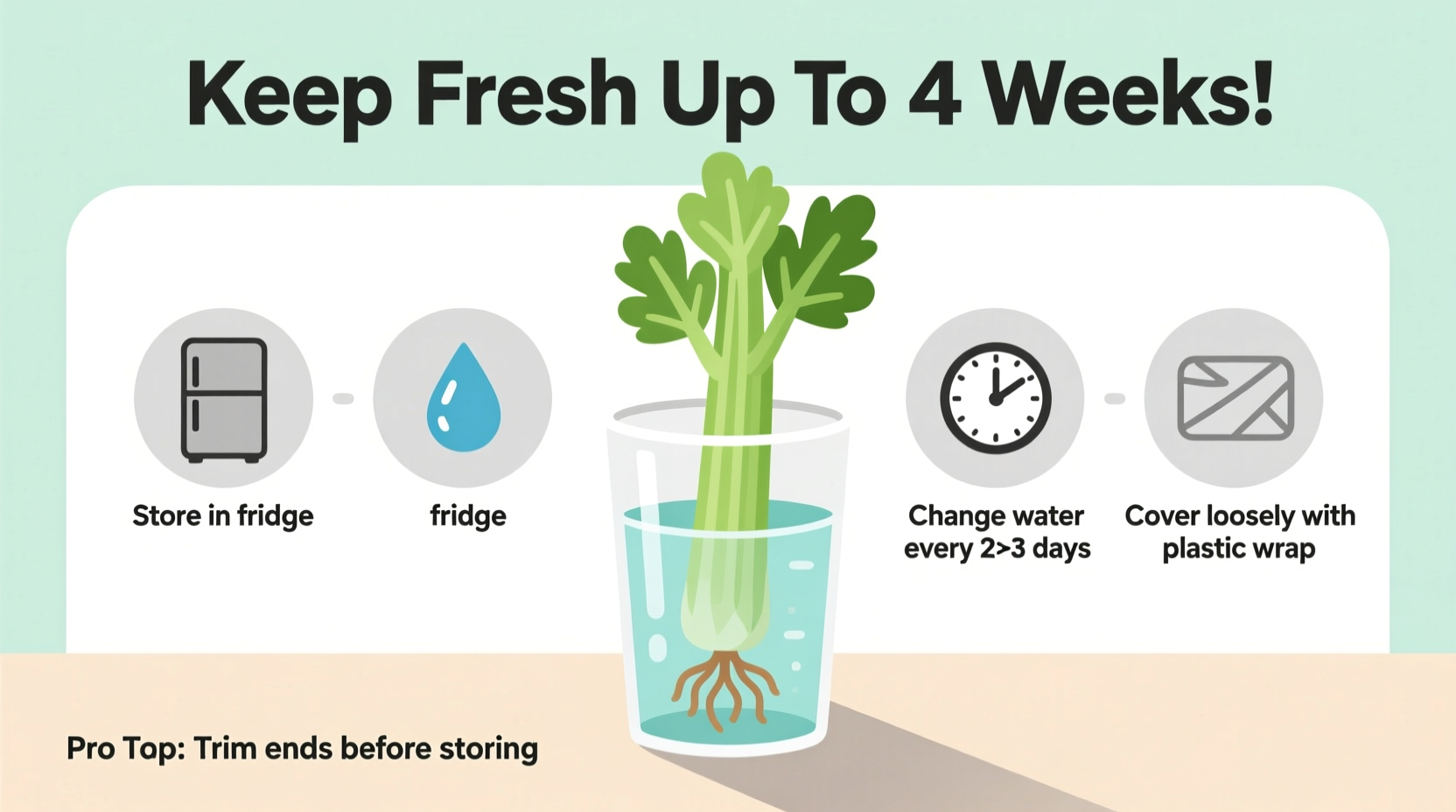Nothing ruins meal prep plans like limp, rubbery celery stalks. As a professional chef who's tested dozens of preservation methods across commercial kitchens and home setups, I've discovered the most reliable techniques to keep celery crisp and flavorful. This guide reveals science-backed storage solutions that extend freshness up to four weeks—tripling the typical shelf life.
Why Celery Loses Crispness So Quickly
Celery's high water content (95%) makes it particularly vulnerable to moisture loss. When stored improperly, its vascular bundles collapse, causing that unpleasant bend-and-snap test failure. Temperature fluctuations and ethylene exposure from fruits like apples accelerate this process. Understanding these factors is key to implementing effective storage solutions.
| Storage Method | Expected Freshness Duration | Texture Preservation | Flavor Retention |
|---|---|---|---|
| Original plastic bag | 3-5 days | Poor | Moderate |
| Aluminum foil wrap | 2-3 weeks | Good | Good |
| Water storage (upright) | 3-4 weeks | Excellent | Excellent |
| Airtight container with damp towel | 10-14 days | Fair | Good |
Step-by-Step Water Storage Method (Most Effective)
Based on USDA food preservation research and culinary testing, this water immersion technique consistently delivers the longest freshness:
- Cut celery ends (1/2 inch) to expose fresh vascular tissue
- Stand stalks upright in a glass container with 1-2 inches of filtered water
- Cover loosely with perforated plastic bag to maintain humidity
- Store in refrigerator crisper drawer (34-38°F ideal temperature)
- Refresh water every 3-4 days to prevent bacterial growth
This method works because it mimics celery's natural growth conditions, allowing stalks to absorb moisture through their base. The perforated cover maintains optimal 95% humidity while preventing condensation buildup that causes spoilage.

Alternative Storage Solutions for Different Needs
Foil Wrap Technique for Space-Constrained Fridges
When counter space is limited, aluminum foil provides superior gas exchange compared to plastic:
- Wrap stalks tightly in heavy-duty aluminum foil
- Store vertically in crisper drawer
- Replace foil every 10 days
Foil's micro-perforations allow ethylene gas to escape while maintaining humidity—critical for extending celery's shelf life without refrigeration moisture damage.
Airtight Container Method for Pre-Cut Sticks
For meal prep enthusiasts storing pre-cut celery:
- Place sticks in glass container with damp paper towel
- Leave 1-inch headspace for air circulation
- Store at consistent 35°F temperature
This approach maintains crispness for celery sticks up to 14 days, making it ideal for weekly snack preparation.
Reviving Wilted Celery: Two Proven Methods
Don't toss slightly limp celery—these revival techniques work for stalks that haven't turned rubbery:
Cold Water Bath (Quick Fix)
Submerge limp stalks in ice water for 30-60 minutes. The cold temperature causes cells to rehydrate through osmosis. Best for immediate use in salads or snacks.
Extended Rehydration (For Cooking)
For celery destined for soups or stews:
- Trim 1/4 inch from base
- Stand in room temperature water for 4-6 hours
- Use within 24 hours for optimal flavor
Avoid These Common Celery Storage Mistakes
- Storing near ethylene-producing fruits: Apples, bananas, and tomatoes accelerate spoilage
- Using non-perforated plastic bags: Traps excess moisture causing slimy decay
- Washing before storage: Excess moisture promotes mold growth (wash only before use)
- Storing at inconsistent temperatures: Frequent fridge door openings degrade quality
According to USDA food safety guidelines, properly stored celery maintains peak quality for 21-28 days. Beyond this point, while still safe to eat if no mold appears, flavor compounds degrade significantly. Always inspect for dark spots or slimy texture before use.











 浙公网安备
33010002000092号
浙公网安备
33010002000092号 浙B2-20120091-4
浙B2-20120091-4